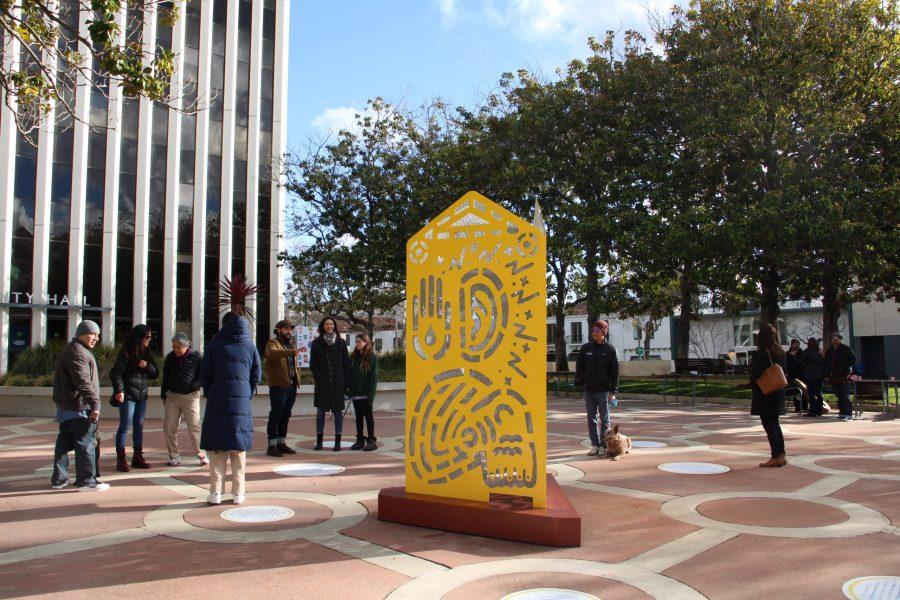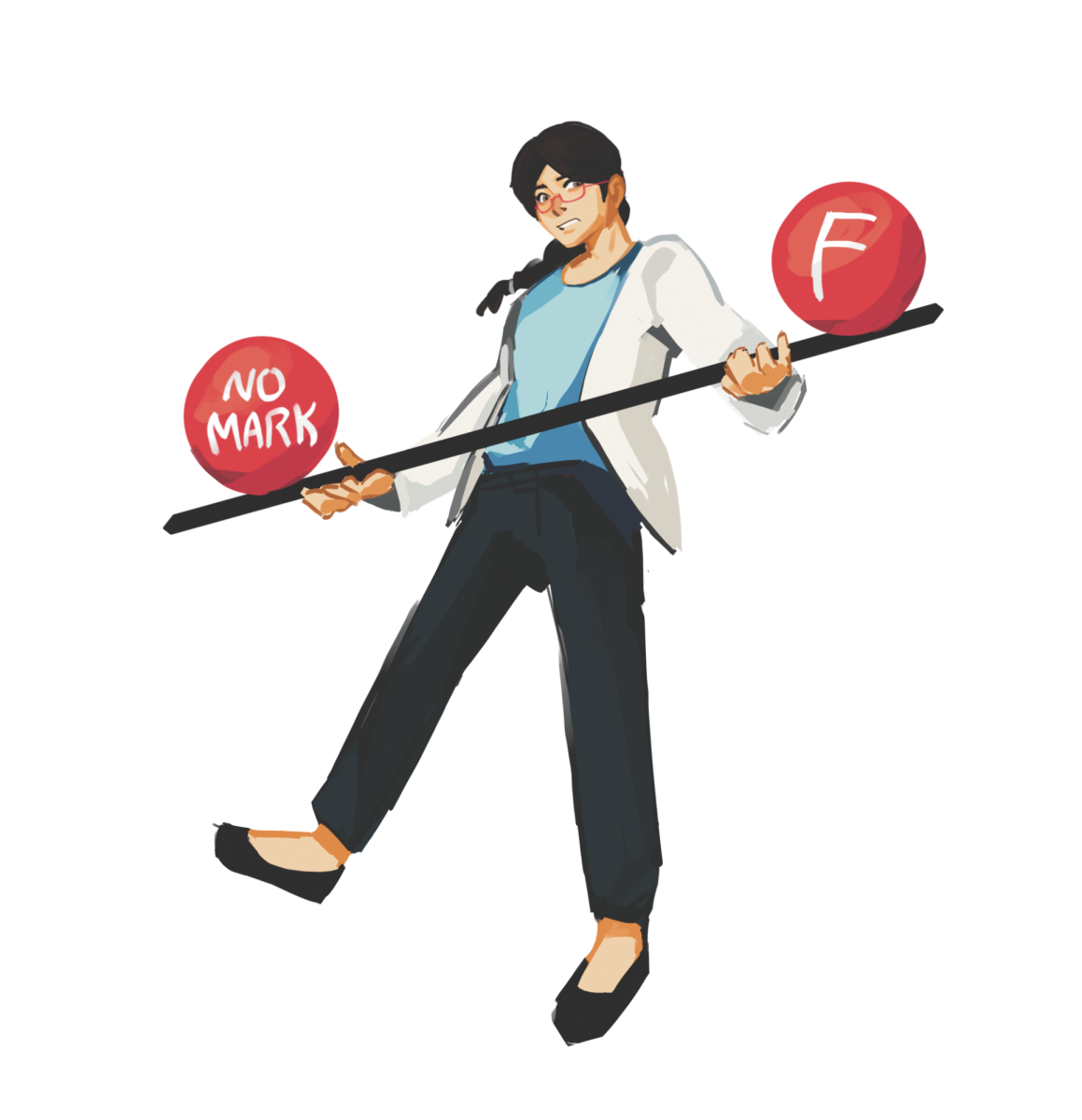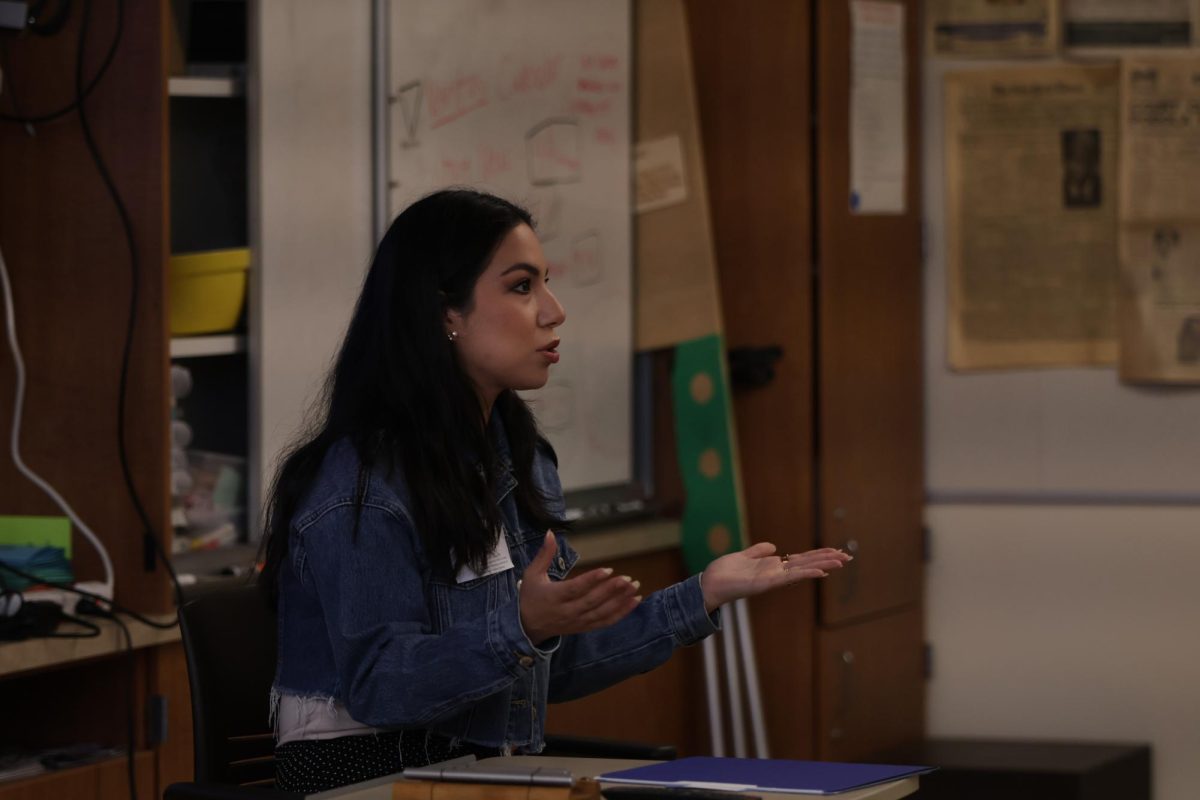After a six-month community engagement process, Latino mixed media artist Rayos Magos revealed
his completed sculpture, “Te Veo, Te Escucho, Te Honro (I see you, I hear you, I honor you),” at City
Hall’s King Plaza on Feb. 24. The sculpture will be on display for approximately nine months.
This sculpture is part of the Dr. Martin Luther King Jr. and Coretta Scott King artist in residency program which the City started in 2021 to engage community members in conversations regarding equity, culture, identity, inclusion and belonging in Palo Alto.
Magos said the goals for his project, which he titled “Rituals of Resilience,” include conducting
interviews with Latinx/BIPOC community members and service providers, contacting local mental
health non-profits, facilitating community workshops and creating interactive and site-specific artwork inspired by community input around the subject of equity in Palo Alto.
“I really wanted to focus on Latinx and people of color that lived at or worked in Palo Alto to uplift their stories and hear from essential workers, because through all of their sacrifice, we were all able to have
a lot of the resources we didn’t have as readily available as we had previously,” Magos said.
Palo Alto Public Program Director Elise DeMarzo kicked off the reveal event by welcoming community members and said the King residency program is intended to help artists amplify different aspects of equity and belonging in the City.
For his sculpture, Magos said he decided to focus on mental health, equity and belonging. The sculpture is assembled from various metal panels that were spray-painted yellow, each containing symbols including hearts, hands, eyes, kneeling figures and teardrops.
“The heart is offering my love for my community, and the hands that are holding it represent change and transformation,” Magos said. “This kneeling figure, the hands and the teardrop in hand is symbolic of the pandemic and the sadness and grief from losing family members and community members and also
losing normal everyday activities. The side panels also have ears which symbolize listening, being open and being willing to learn something.”
Fletcher seventh grader Noa Zeitlin said she was inspired by the sculpture’s ability to capture the effects of COVID-19 on mental health.
“(The sculpture) adds color to the community,” Zeitlin said. “It’s really cool how someone can express themselves through art.”
Magos said he conducted interviews and workshops to guide his artwork. During these workshops, participants were encouraged to reflect on their experiences during COVID-19 by answering prompts that evoked themes related to emotions, objects, places, activities, people and relationships.
“I was inspired by the various stories that I heard from people during various workshops I ran,” Magos said. “Many of the themes (expressed in the sculpture) came from my workshops and interviews, and I took that information and translated it into the sculpture.”
The project, which took approximately six months to complete, involved Magos working with a team of artists to transform his artwork into a 3D model.
“There were people who fabricated it, so they cut (it) out and then welded it together,” Magos said. “Since it’s public art, the process was long and the city had to approve the sculpture to ensure it was safe.”
Before Magos began creating the sculpture, he worked as a mental health specialist and left his job
temporarily to focus on his art. Magos said he initially felt uncertain about leaving his previous job, but he still enjoyed the opportunity to create art for the community.
“I’m really fascinated (by) public art,” Magos said. “It evens the playing field and allows everybody
to come into a space to enjoy arts, whereas my experience previously has been mostly showing galleries.”
Under the sculpture, Magos included English and Spanish quotes, and he said he hopes that his sculpture will add a new light to the community and that individuals will be curious not only about
the sculpture but also the meaning behind it.
Magos said, “Hopefully, it gives people hope, builds community (and) sparks conservation and dialogue.”









